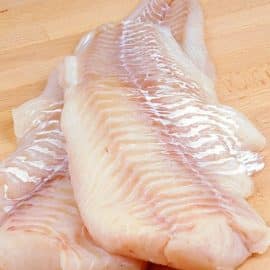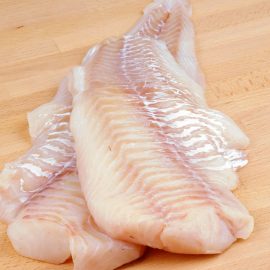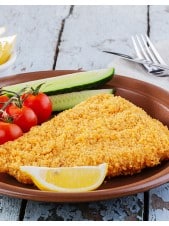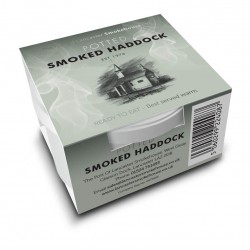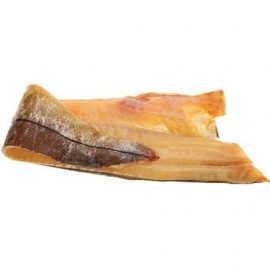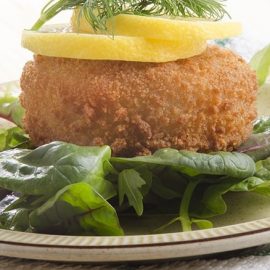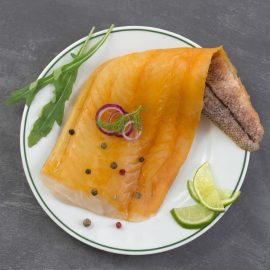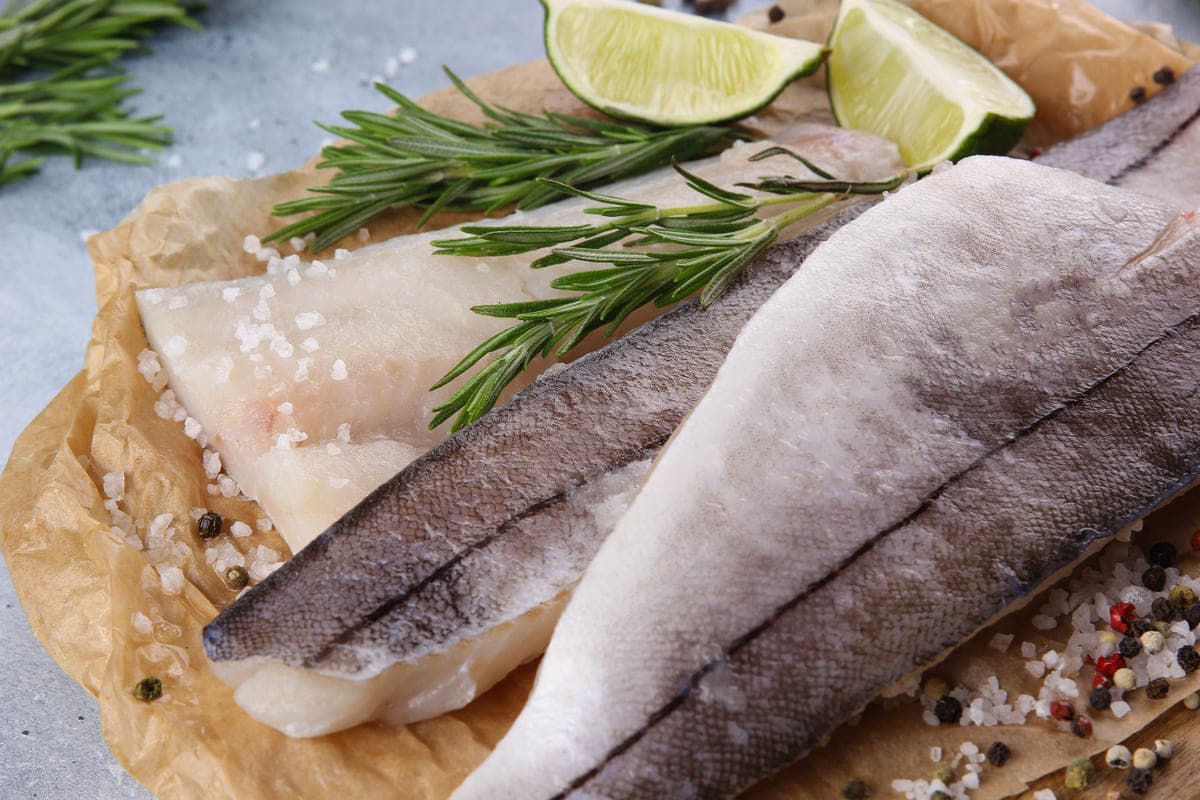
Introduction
Haddock is a popular cold-water flatfish found in Northern Atlantic and Arctic waters. It belongs to the Gadidae family, alongside cod, haddock and whiting and is a commercially important species in Europe, both as a wild and farmed fish. Outside of Europe, you can find it in the Atlantic, Pacific and Arctic oceans. It is a white-fleshed fish that is easy to cook and often served as an alternative to cod or other white fish. It has a mild flavour and is relatively low in calories.
Description
Haddocks can reach a maximum length of about 40 inches (101 cm) and live up to 18 years. They are identifiable by their white flesh and black lateral line and are commonly found in depths of 30 to 200 meters and prefer habitats with sea bed composition composed of fine gravel, sand, and mud. Their diet consists of small crustaceans, molluscs, annelids, and worms.
Physical Characteristics
Haddock is mainly found in the cold-temperate waters of the North Atlantic Ocean, ranging from Iceland to the English Channel. It prefers to inhabit deeper waters beyond the continental shelf and can be found around the coasts of Iceland, Norway, Scotland, Ireland, France, Spain and Scandinavia. Physically, haddock has a silver-grey body with three distinct black stripes running along its back from its head to its tail. It is a relatively small fish, with an average length of 20-30 cm, but it can reach up to 60 cm.
Haddock are easily identifiable by their silver-green backs, white bellies, and a black thumbprint near the pectoral fin. Elongated, smoked-fish-like shape, sharp spiny fins, and single chin barbel characterise this species. The average haddock ranges from 6 to 8 inches in length and can grow up to 15 inches for larger adults. Their bodies have a smooth, slimy texture covered with large, pearl-like scales and a dark line running along the sides of their bodies.
The head of the haddock has a large, slightly oblong mouth lined with a black and white checkered pattern. These species have two sharp, protruding canine teeth near their lower jaws and two whisker-like barbels. They also have a 2-4 inch long dorsal fin, an anal fin, pectoral fins, and ventrals.
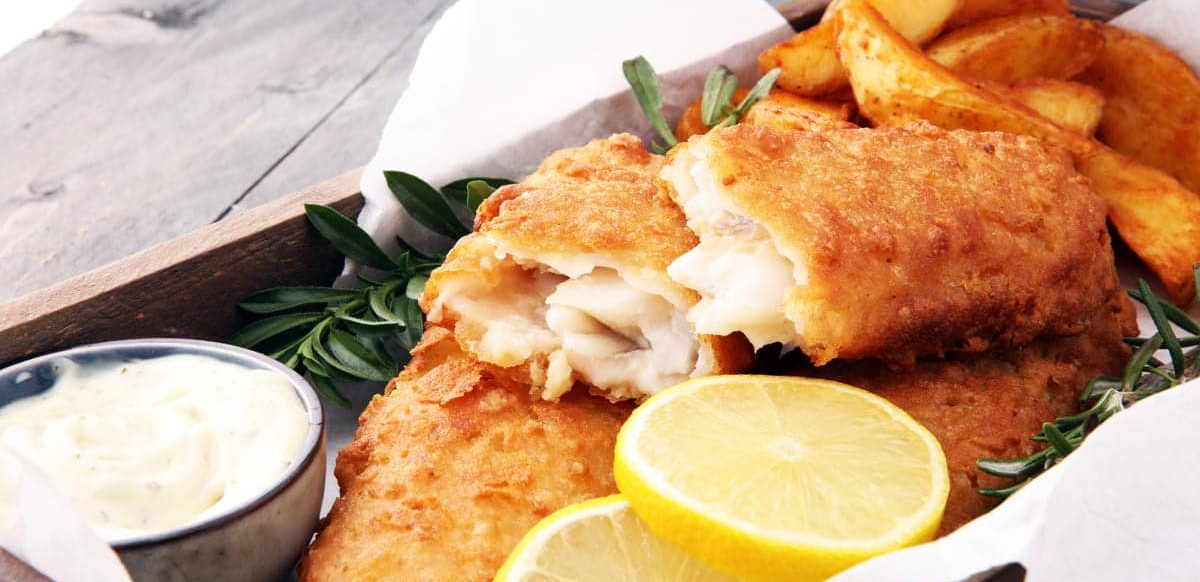
Habitat and Feeding
Haddocks are most common in coastal waters ranging from 15-90 meters in depth and prefer temperatures between 40-90 degrees Fahrenheit. As for food sources, haddock feeds on molluscs, crustaceans, fish, and worms on the ocean floor.
Fisheries and Uses
Haddock has been sustainably fished and farmed for decades and is plentiful in the wild. It is an essential commercial fish in many countries and is often used for food, bait, and pet food. Haddock is a popular choice in many dishes and has a distinct flavour that stands alone when cooked or served with other ingredients. It can be prepared in many ways, from baked and poached to fried, smoked haddock, and grilled haddock.
Haddock is especially popular in eastern European countries as a food source. It can be prepared in a variety of techniques, such as by pan-frying, baking, smoking and deep-frying, and is often served in dishes such as chowders, sandwiches, fish cakes, fish pies and curries. As a source of lean animal protein, haddock is also popular among individuals looking for nutritious protein sources.
Population and Conservation
Due to its commercial importance, haddock is managed for sustainable fishing. East coast haddocks are managed through the US/Canada Atlantic Fisheries Management Plan, and the European Unions Common Fisheries Policy governs North Sea haddocks. Through these plans, harvesting of the species is regulated to ensure the long-term health of the stock, as well as the implementation of measures to reduce bycatch.
In recent decades, the haddock population has been under threat due to climate change and overfishing. As such, various conservation efforts have been implemented to protect the haddock population, including catch limits and regulations. Despite these efforts, haddock populations remain precarious, with much of the research currently devoted towards understanding how climate change and fishing practices influence haddock species.
Distribution of Haddock Stocks
Haddock is predominantly found in the North Sea, with most continental shelf landings belonging to Scotland, England, and Iceland. It is also found in waters around Ireland, Norway, the UK and other areas of the North-east Atlantic region. Scottish haddock and other varieties can quickly replenish fish stocks, making it a viable species to fish sustainably.
In 2019, a study conducted by the ICES Journal of Marine Science confirmed that haddock stocks in the North Sea were healthy and could be sustainably exploited. This research paper recommended that haddock fishing be managed to prevent overfishing and preserve ecological thresholds.
Conservation Status
Haddocks are listed as not threatened on the IUCN Red List. While their population is stable, haddock are listed as a vulnerable species and are subject to conservation measures set by the European Unions Common Fisheries Policy. Increasing exploitation, habitat destruction and climate change are all potential threats to the haddock population. For this reason, sustainable practices are enforced by the EU, which has capped the number of haddocks able to be fished at 1.2 million tonnes.
Sustainable Fishing Practices
Sustainable haddock farming involves employing various sustainable fishing practices and best practices for haddock conservation. These practices are specially designed to ensure haddock stocks remain healthy and resilient.
Examples of sustainable fishing practices include minimising bycatch and habitat disruption, using closed containment aquaculture systems to reduce escapees, utilising selective trapping, holding, and tagging techniques to minimise impact on wild fish stocks, employing techniques like polyculture and integrating other fish species in rearing systems to mitigate health risks and reduce competition for food.
Most fisheries also implement rotational or seasonal harvesting, or time-limited protection practices like seasonal closures and habitat guard zones, utilising selective harvesting and stocking practices to maintain genetic diversity and promote robust wild populations, replacing bottom trawls and dredges with more selective equipment, enacting fleet management systems, such as day at-sea restrictions and catch/effort quotas, embracing particular harvest methods such as small mesh sizes and release of undersize fish, utilising biodiversity conservation strategies like early growth harvesting, and employing best environmental fish farming practices and green aquaculture principles.
Sustainable haddock fishing practices are essential for the health of haddock populations and for conserving wild-caught haddock. Through careful management and fishing practices, haddock remains a popular and sustainable fish for enjoyable, healthy meals.
Haddock’s Diet
Haddocks are bottom-dwelling feeders and mainly feed on crustaceans, small fish, and other aquatic organisms, such as amphipods, sea fleas, mysids, shrimp, and squid. They use their senses of smell and taste to detect prey and eat copepods, small fish, zooplankton, and on occasion, even algae or diatoms. Juveniles inhabiting shallow coastal waters mainly feed on planktonic crustaceans, copepods, and larval stages of other species.
Nearshore, haddock feed primarily on crustaceans and worms, while offshore, their diet changes to include a broader range of benthic invertebrates and fish. With such a varied menu, it’s no surprise that haddock is a popular food source for commercial fisheries and recreational anglers. Haddocks are usually fished during the colder months from December to April.
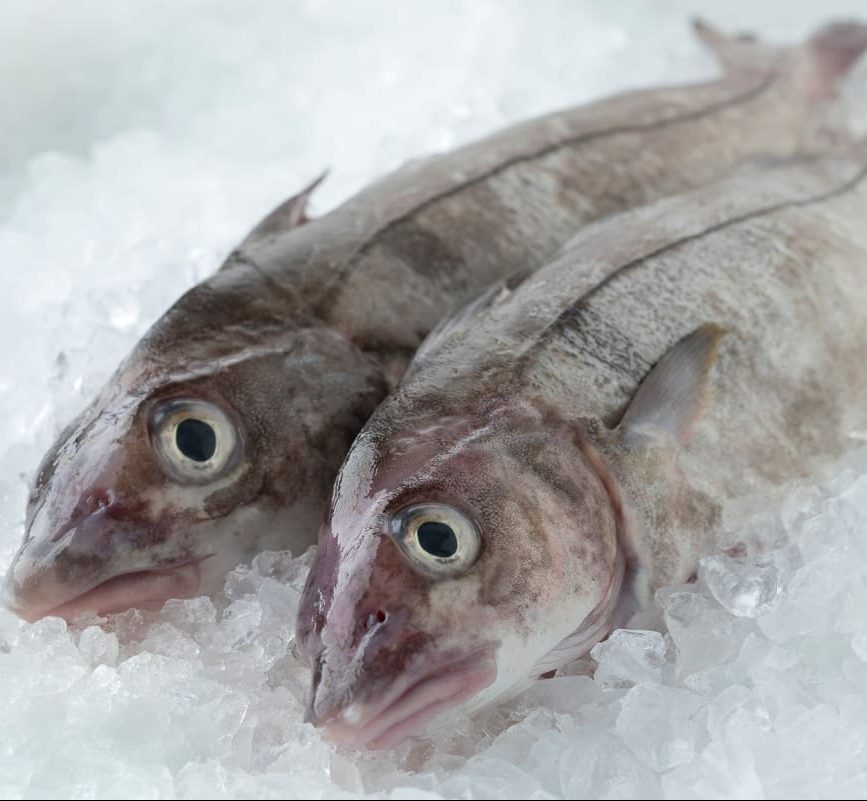
Reproduction
Haddock spawn twice a year, during spring and fall when temperatures are in the 10 to 12 degree Celsius range. Females release up to 1 million eggs, fertilised by males, and then dispersed away with currents into deeper areas. The eggs hatch after 4-5 weeks, after which the young Haddock remain in shallow water for the first few weeks of life before migrating to the deeper areas, where they can reach an age of up to ten years.
Spawning Habitats
Haddock is a highly migratory species that follow the Gulf Stream until it reaches the Atlantic shores, from Newfoundland to the Gulf of Maine. You can also find them in European waters such as the North and Baltic.
Life Cycle of Haddock
Haddock has a varied life cycle. Sexual maturity is typically reached between two to three years of age when the fish can reproduce. Reproduction is usually between April and June in the spring, when the water temperature is warm enough for the eggs to survive. Spawning sites are located in deeper offshore waters between depths of 30-80m, near the continental shelf. Haddocks form large spawning aggregations in these waters, and the female can release an average of 300,000 eggs during spawning. The eggs drift with ocean currents before hatching 24-48 hours later, at which point the haddock enter their larval stage, where they feed on plankton.
Once hatched, the juveniles spend their first few years of life in shallow coastal waters before they mature and swim to deeper ocean areas. As they grow, haddock gradually move closer to shore, feeding on molluscs, crustaceans, and worms on the sea bed. This pattern is continued throughout the remainder of their lives, usually between 8-15
Classification
Haddock is classified as Teleost fish, with a thin bony head and fins made of modified bony plates. Haddock is also a member of the Gadidae family, which is further classified as belonging to the Serranidae, Acrogenichthyes, Carboniferous, and Late Cretaceous biodiversity clades.
Haddock has a scientific name of Melanogrammus aeglefinus, and is monitored and conserved by the Marine Stewardship Council (MSC). Other members of the Gadidae family with a single chin barbell include cod, pollock, whiting, and hake.
Etymology
The etymology of the word haddock is disputed. Its origin is believed to have been derived from the Old Norse hadd, used in the 6th century, although some think it had a Dutch or English origin. Additionally, the term haddock may have derived from the Old English word hagud, which means hook and may refer to the species’ large mouth. The term “haddock” has been used since the 1500s. It was popularised by fishermen in Scotland, the Faroe Islands and Iceland.
Culinary
Haddock is valued for its mild, white flesh and delicate flavour, making it a popular choice among seafood lovers. You can use it for many seafood dishes, including baking, pan-frying, broiling, grilling, poaching, and steaming. Haddock is also a nutritious source of omega-3 fatty acids and low in mercury, making it a healthy addition to any diet.
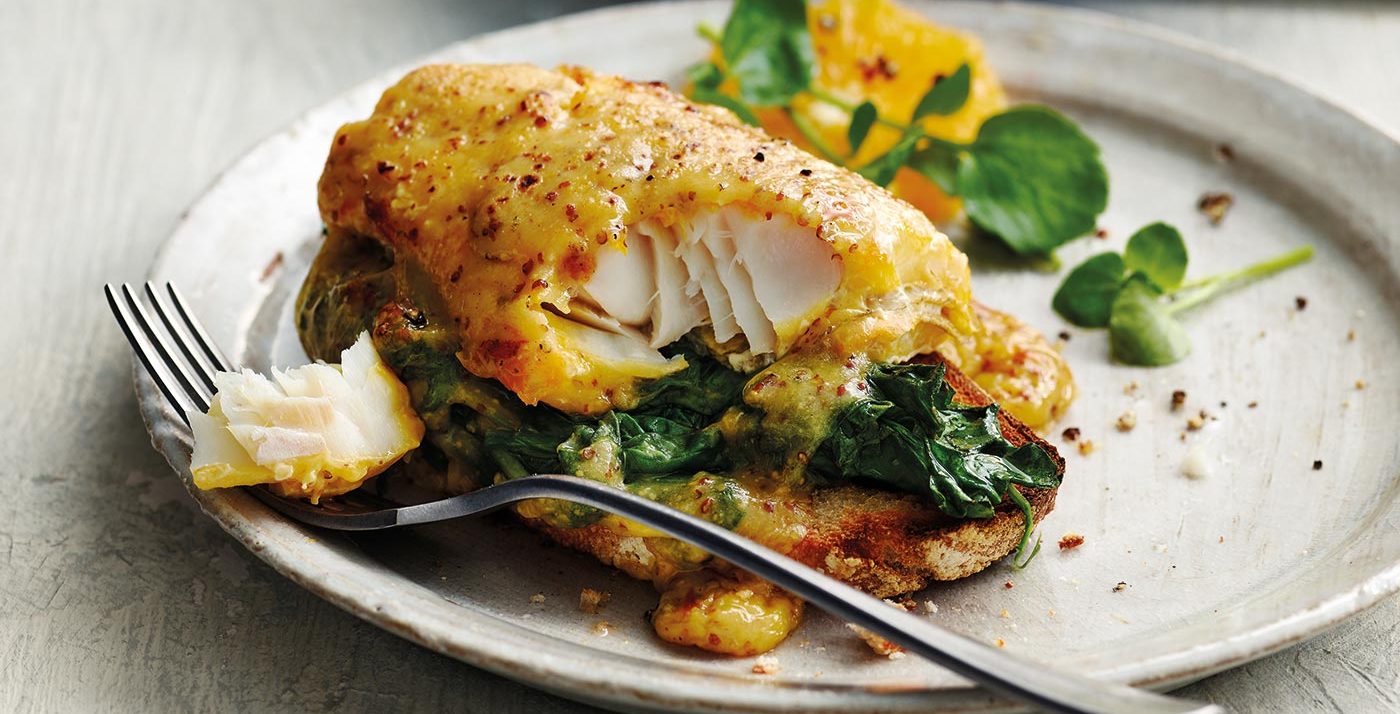
Significance
Haddocks are essential to the recreational and commercial seafood industries and local fisheries. Despite their vulnerability during their egg stage, haddock remain resilient, contributing goods and services to many areas worldwide. Their ability to reproduce in the same grounds year after year means haddock can maintain healthy populations, providing for people for years to come.
Uses
Haddock is a popular fish that is eaten worldwide. Haddock fillets are commonly boiled, pan-fried, baked, and grilled, and commonly used in chowders, dips, salads, sandwiches, and pizza. It is particularly popular in Scotland, and the haddock industry is worth over $56.4 million in the United Kingdom. Haddock is also used for animal feed and fertiliser due to its high nutritional value.
Popularity and Availability
Haddock is widely used in fish-based dishes, often smoked, grilled, or fried. It is most commonly served in chowders, fish and chips, and fish pies. It can also be found in frozen and canned forms and is a common ingredient in some traditional British dishes such as kedgeree, bubble and squeak, or Welsh rarebit. In Japan, haddock is also popularly used in dishes such as tempura.
Nutritional Values
Haddock has excellent nutritional value, making it a popular choice for health-conscious individuals. It is low in fat yet high in protein, vitamins and minerals. Additionally, its firm flesh makes it ideal for various cooking methods, as it helps it to retain its shape easily.
Haddock is a lean source of protein and rich in vitamins and minerals, including vitamins A and B12, magnesium and omega-3 fatty acids. It is low in fat and calories, making it a healthy and sustainable choice. The Marine Stewardship Council and the Marine Conservation Society have recognised Haddock for its sustainability.
Haddock is an excellent protein source, low in fat and calories yet high in essential vitamins and minerals. It is an excellent source of all the B vitamins, vitamin E, omega-3 fatty acids, and selenium, as well as various micronutrients such as iron, potassium, magnesium, zinc, and copper. Also, haddock is a good vitamin C, A, and folate source. As it is low in cholesterol and saturated fat, it is considered a healthy alternative to a balanced diet.
Health Benefits
Omega-3 fatty acids found in haddock consume been linked with the decreased risk of numerous heart diseases, strokes, inflammation, and certain chronic diseases. These fatty acids help maintain a healthy heart and healthy mind. Other essential minerals and vitamins such as niacin, selenium, phosphorus, proper B-family vitamin
Versatility
Haddock is a versatile fish and is often cooked in various ways, such as pan-fried, baked, boiled, or grilled. It is widely used as the main ingredient in fish and chips in the UK and Ireland. Haddock is also enjoyed in fish chowders, soups, and stews, as well as in seafood cakes, crepes, and fish pies. It pairs well with citrus, butter, curry, and other flavours, often seen in recipes from India or other parts of Asia.
Haddock is a mild-tasting fish that offers health benefits and great versatility in recipes. With its flaky texture, mild flavour, and nutritious attributes, haddock is an excellent choice for seafood lovers.
Cooking and Eating
Haddock is well-known for its mild, slightly sweeter flavour and flaky white flesh, making it a popular choice for many traditional and contemporary dishes. Cooking methods include baking, frying, grilling, and boiling, and the fish is often used to prepare recipes such as fish and chips, fishcakes, chowder, and more.
Taste and Texture
Haddock has a mild flavour with a slightly salty and sweet aftertaste. Its texture has been compared to other whitefish, such as cod, pollock and hake, although some say its flesh is a bit firmer. Despite this, haddock has lower fat content than Pacific cod and Atlantic Pollock, making it better suited for diet fish dishes. The light flavour allows it to be paired with a wide range of ingredients such as herbs, citrus, garlic, and sauces.
Due to its mild flavour, versatility, and ease of preparation, haddock is a popular fish often featured in cuisines across the globe. It is a healthy choice that can help to reduce the risk of diseases like heart disease, stroke, and cancer. For these reasons, haddock is an ideal ingredient for any diet.
Preparation
Haddock can be cooked in several ways, from baking to frying, grilling to poaching.
Baking
Baking is an easy and popular way to prepare haddock. To bake, marinate the fish in a creamy sauce for up to 24 hours, then season with herbs, spices, lemon, and olive oil before baking at 375 degrees for 10-15 minutes.
Frying
Frying haddock with a breaded or unbreaded coating is a classic preparation. To fry, season the haddock and lightly dip it in an egg and flour batter. Heat a light oil, such as canola oil or peanut oil, in a skillet over medium heat, then add the haddock, sprinkle some salt and cook until golden brown.
Grilling
Grilling haddock is simple and flavorful. Bring the haddock to room temperature, brush it with oil, and grill over high heat for 8-10 minutes. To add more flavour, marinate the haddock in a flavorful sauce such as a lemon-garlic sauce before grilling.
Poaching
Poaching is a great way to retain the moisture and tenderness of haddock. Simmer the fish in a pan with water, white wine, lemon juice, and aromatics for 8-10 minutes.
Serving
No matter the cooking method, haddock should be cooked until it easily flakes with a fork. It is often served with creamy white wine, lemon juice-based sauce, or other creamy sauces.
Haddock is an excellent fish for a range of meals and recipes. Its mild flavour, light and flaky flesh, and ease of preparation make it a delicious and satisfying meal. With the right combination of marinating and cooking, haddock can be a delightful meal.
Side Dishes
Haddock is often preferred to other white fish due to its mild flavour, lean, firm texture, and versatility. With an abundance of unique flavours and recipes, haddock makes an excellent choice for meals of any style. H
Boiled potatoes and steamed vegetables such as broccoli, carrots, and peas are a great way to create a light side dish that brings out even more of the haddock’s delicate flavour. Other classic sides that pair well with haddock include rice or pasta dishes and can be prepared with seasonings and herbs such as thyme, garlic, rosemary, and oregano. Additionally, roasted sweet potatoes, cauliflower, artichokes, and asparagus are great options for a more flavorful side dish.
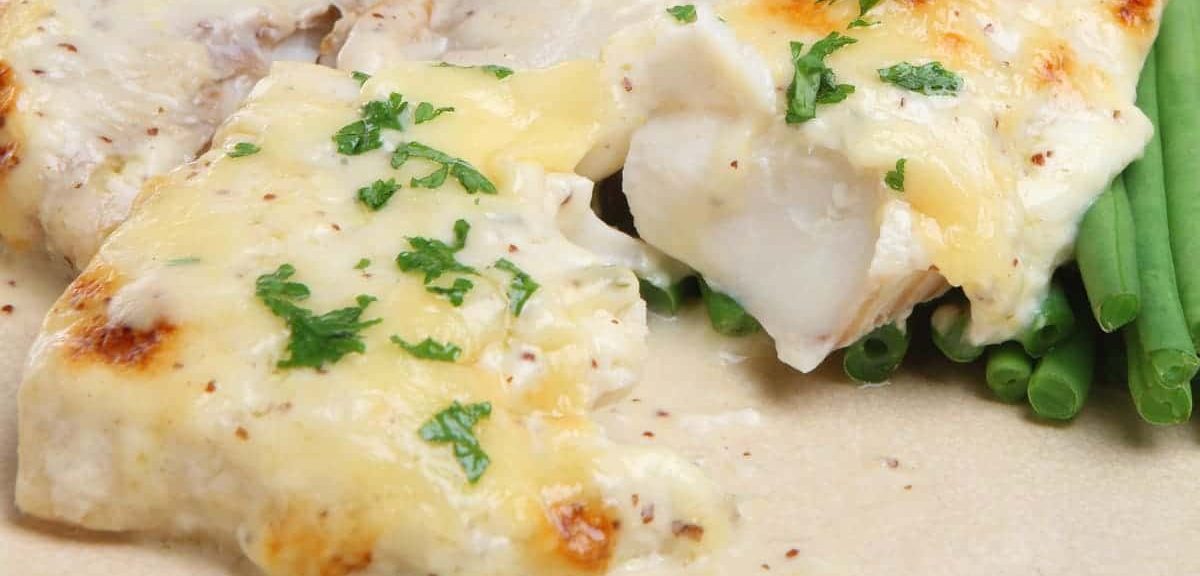
Creative Options
For a more inventive meal, ideas include adding capers, olives, and grape tomatoes to a cheesy risotto, stuffing a lemon-garlic butter sauce into mushrooms and pairing them with haddock filets, making kabobs with bell peppers, onions and fresh herbs, or serving a side of tabbouleh with a haddock fillet. A light, refreshing side dish can also be served with a citrus coleslaw or a green salad with a light citrus vinaigrette.
Suitable Sauces & Spices
Haddock pairs particularly well with mustard-based sauces, cream-based sauces, pieces of parsley or chives, and white wine. Creamy sauces are often recommended as accompaniments because they emphasise the delicate nature of haddock. Furthermore, you can use other seasonings such as thyme, garlic, rosemary, and oregano to bring out the flavour of the haddock.
Cooking Techniques
With its naturally flaky texture, haddock can be cooked using different techniques to achieve a delicious outcome. Roasting, baking, and grilling are all recommended techniques that can be used with haddock. Some of the sides that can accompany haddock cooked through these methods include baby potatoes, asparagus, green beans, creamy potatoes, mashed potatoes, roasted carrots, freshly cooked pasta with olive oil, butter, garlic, and herbs, rice or couscous, cauliflower, romaine lettuce, kale, spinach, and beets. Additionally, homemade tartar sauce, lemon wedges, pickles, and onions can be served as sides for a complete meal.
Haddock offers a world of possibilities for an enjoyable and flavour-packed meal. Its versatility makes it easy to incorporate a broad range of sides to suit any preference. Use these tips to create a delicious and unique meal with haddock.
Popular Recipes
Baked haddock is a popular recipe consisting of Haddock filets topped with butter, mayonnaise, lemon and parsley before being baked in the oven. Haddock chowder is another classic recipe which involves boiling haddock alongside potatoes, onions, and milk to create a thick and creamy soup. Fish and chips have been a longstanding symbol of British cuisine, featuring breaded Haddockfilets fried and served with creamy tartar sauce. Lastly, Haddock egg bake is a straightforward dish consisting of cubes of cooked haddock combined with eggs, breadcrumbs, cheese and seasonings.
Haddock offers plenty of opportunities to create delicious dishes, which can be cooked, baked or fried. With a mix of traditional recipes passed through generations and modern dishes utilising different cooking techniques, Haddock is a versatile and nutritious choice for any meal.
Origin of Popular Recipes
Many recipes utilising Haddock originate from Europe, mainly the UK, as a tradition of fish dishes. Others may have been adopted from different cultures with similar ingredients, such as Fish and Chips being a classic British dish. Furthermore, some recipes can be traced back to the sailors in the 19th century. Recipes may also have been developed by experimenting with different cooking techniques or ingredients.
Preparation and Cooking
Haddock is popularly prepared in numerous ways, such as baking, grilling and frying. It is a common ingredient in fish and chips and can be served as part of several different recipes, such as fish pie, fishcakes, and fish soup. Many countries, such as the UK, have been known to substitute haddock for cod in traditional dishes due to their similarities in taste and texture.
Cultural and Culinary Similarities
Haddock also has some interesting similarities with other fish species found in the region, such as coley and whiting. It is found to be baked and fried in the same ways as other fish, such as cod and pollock, and its mild flavour pairs nicely with other ingredients like butter, garlic, and herbs. In this regard, haddock is an ideal fish to substitute for cod in many dishes.
Overall, haddock is a nutritious and versatile whitefish with many similarities and differences compared to other fish species.
Conclusion
Haddock is an important fish species, particularly in the North Atlantic, giving rise to commercial and recreational fisheries. Further, this species is key to many traditional and contemporary dishes due to its mild, sweet flavour and flaky, white flesh. In light of this, it is crucial to adhere to sustainable management and fishing regulations to preserve haddock stocks.

